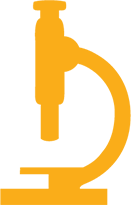Camp Yellow Scope : Pigments & Papers

Howdy Campers!
Welcome to week 5 of Camp Yellow Scope: Pigments & Papers! Who's ready to have some fun (and do science!)?
Click here if you’d like to download printable instructions. You can also print out a lab worksheet to record your observations, jot down ideas, and design your own experiments! If you collect your worksheets together from all eight weeks, by the end of the summer you will have your very own Camp Yellow Scope notebook!
Experiment 1: Go Green!
Do you know what the three primary colors are? That's right - red, yellow, and blue. All other colors can be made by mixing these three colors together in different combinations.
What do you get when you mix blue and yellow together? …………
Did you say green? That's correct. But have you ever wondered if you can "un-mix" green to get blue and yellow again?! In this week's experiments, we are going to try to do just that. Get ready to amaze your friends and family with some pretty cool science.

Let’s get started!
Clear a space on the kitchen counter, your desk, or the picnic table in the backyard. Put on some clothes that can get messy, and get ready to un-mix dyes!
Hypothesis
- Can you un-mix the dyes in green food coloring? YES / NO
- If you said YES, what colors do you think it will separate into? Circle one or more: red yellow purple blue orange
Instructions

- Put on your safety goggles.
- Using your scissors, cut the coffee filter or paper towel into rectangular strips - about ½ inch wide and 4 inches long.
- Squeeze one or two drops of food coloring onto a small piece of aluminum foil.
- About 1” from the bottom, using a toothpick, draw a line across the strip with the green food coloring.
- Make a solution of salt water: measure 1 tsp of table salt and place in one of the cups. Add ¼ cup of warm tap water and stir to dissolve. You will use this salt water to separate the green dye.
- Add a small amount of this salt water to the second cup, just about ½” deep.
- Holding the top of the strip, carefully dip the very bottom of the strip into the water in the cup. NOTE: Don’t let the water touch the marker line.
- Continue to hold the strip in the water for about one minute to allow the water to move up the strip, through the green line and beyond.
- Remove the strip from the water and record your observations below or on your lab worksheet.

Congratulations, campers! You un-mixed a mixture of green dye.
What’s going on?
The technique you just used to un-mix green color is called paper chromatography. When the water touches the paper, it travels up through a process called capillary action. (You learned about that in last week's experiments with the celery!)
When the water reaches the green dye line, it pulls the dye along with it and separates out the different colors that make up the green dye mixture.
Why do some colors move further than others?
- Some of the colors stick to the paper more than others so they don’t move as far up the paper.
- Some colors are smaller or lighter than others so they move further up the strip.
In this way, the different colored dyes in the green food coloring are separated, or un-mixed!

Adding salt to the water changes the properties of the water. It makes it more attractive to some types of dyes. Some dyes move faster in salt water than in plain water. This means that for certain dyes, like the green food coloring we used, that salt water gives a better separation of colors.
The final paper with separated colors is called a chromatogram. Scientists use the terms stationary phase for paper (because it doesn’t move) and mobile phase for water (since it moves!)

Why does it matter?
Can you think of some applications of paper chromatography from your daily lives?
- Forensic scientists use chromatography to test samples found at a crime scene to help solve crimes.
- Food scientists use the technique to separate out and detect toxins in foods.
- Environmental scientists use chromatography to look for really small amounts of dangerous substances such as pesticides in groundwater.
You own it!
Test yourself: True or False
- Chemical reactions can be un-mixed.
- Paper chromatography is a technique that many different scientists use in their work.
- Some dyes move up the filter paper different distances than others because they have different weights.
Answer key:
1. False. Chemical reactions cannot be un-mixed because during a chemical reaction the individual components change and form new molecules. Mixtures, which do not change when combined, can be un-mixed.
2. True
3. True
We hope you had fun separating dyes. Next week we'll have some fun with lemons! So check back next Tuesday for new experiments and more summer science fun!
We'd love to see how your experiments turned out! Share your photos or videos:
- Facebook: Yellow Scope Science Kits for Girls
- Twitter: @YellowScopeGirl, #CampYellowScope
- email: info@yellow-scope.com
For more exciting experiments, check out our science kits on the SHOP tab of our website!



Yellow Scope
Author